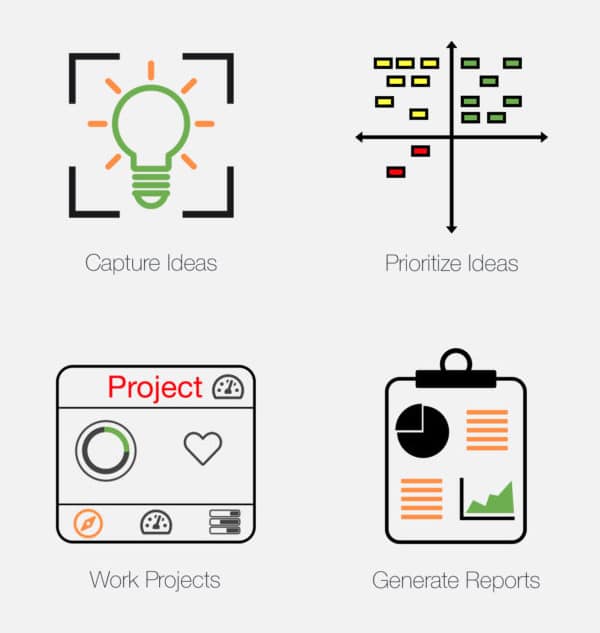Here’s How a Continuous Improvement Platform Works Best:
Set a Goal and Make It Visible
The key to getting management support is to work on goals & projects that will impact the strategic initiatives and KPIs the executive team is focused on. It is important to keep the goals visible so that others can see them and have access to them.

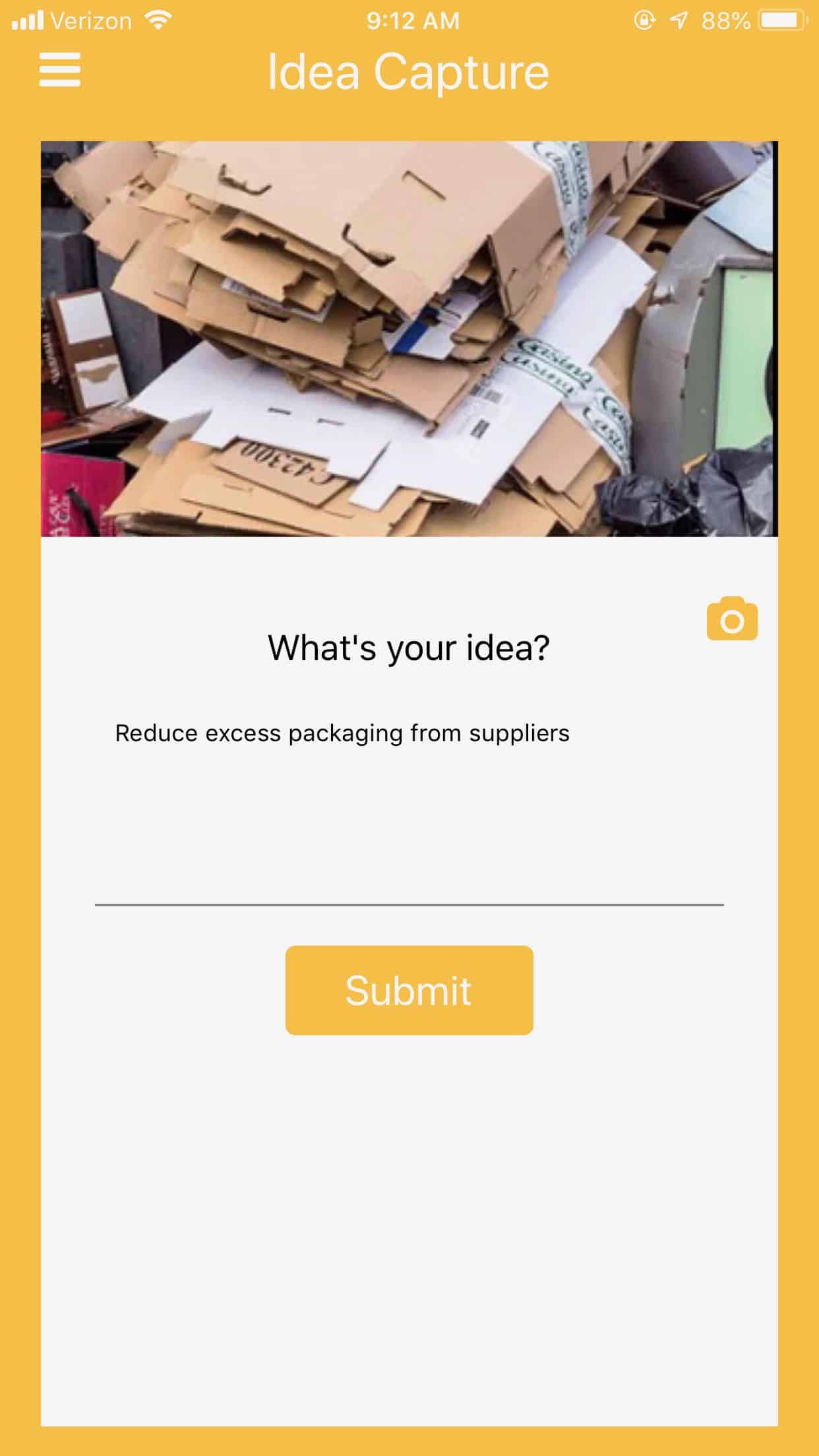
Capture Ideas for Improvement: Eliminate Waste and Variation
Don’t let a good idea get past you without collecting it. Put yourself on the floor; because this is where the action is. Talk to people doing the work and ask them for ideas to eliminate waste and variation. Gemba Walks because they are a great way to solicit and capture ideas.
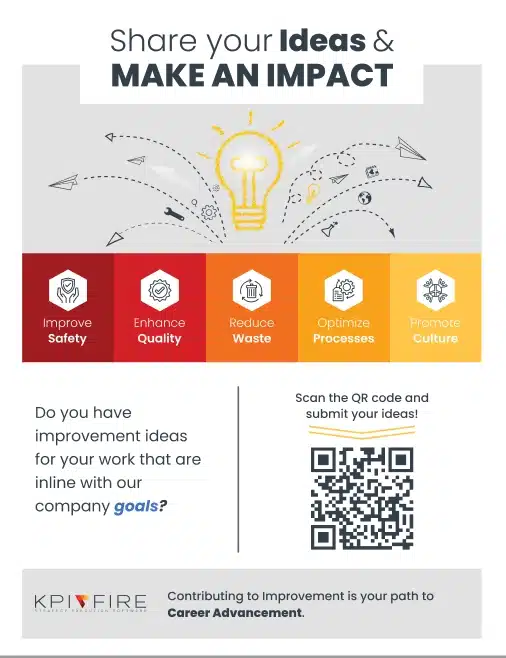
Spend Time Where It Makes the Biggest Impact
This step is important. Schedule a regular meeting with your team to review and prioritize ideas. For each idea, give it a rating for effort vs impact, and your prioritization exercise will be much easier. KPI Fire’s Idea Funnel helps you organize and select the best ideas to turn into projects. KPI Fire also keeps team members in the loop with an alert or email if they miss the meeting.
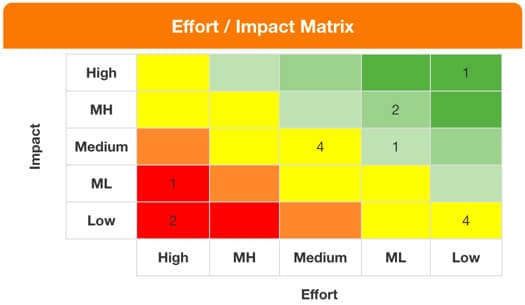
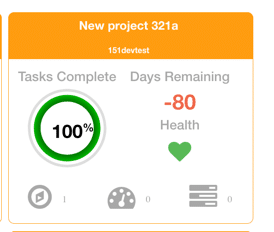
Take Action: Turn Ideas Into Projects
Finally, take action. Turn those great suggestions into DMAIC projects, KAIZEN events, or QUICK WINS. KPI Fire has built-in workflows for common problem-solving methods. Or you can create your own. Upload tools and templates so everyone in your company has a standard problem-solving process. KPI Fire is the most effective and intuitive Lean Six Sigma program management software on the market. We are trusted by many great companies with world-class Lean/Six Sigma programs.
Celebrate Success by Tracking Project Benefits
Track the hard and soft savings from your improvement projects. Celebrating successes engages your project team and creates more success.
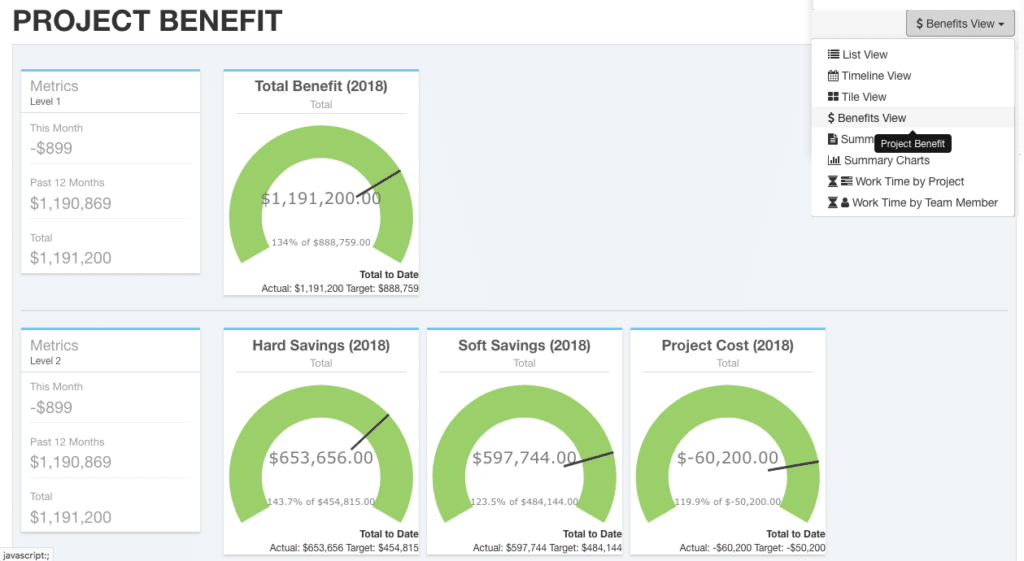
Quantify the Impact of
Your Continuous Improvement Program With KPI Fire
Unlock the full potential of your continuous improvement initiatives with KPI Fire. Our continuous improvement software tools let you accurately measure and analyze the impact of your improvement projects.
By leveraging built-in templates for methodologies like DMAIC, PDCA, and Lean Six Sigma, KPI Fire ensures that your projects are effective.
Our intuitive dashboards and visual management tools allow you to track progress in real time, ensuring transparency and accountability across your organization.
With KPI Fire, you can prioritize high-impact projects, streamline problem-solving processes, and celebrate your every success with concrete data.
Use KPI Fire and Follow These Steps to Continuous Improvement
- Firstly, capture and prioritize improvement ideas with effort vs impact analysis.
- Next, manage projects with a standard approach (DMAIC, PDCA, 8D, other).
- Don’t forget to track and report project status and project benefits,
- And be sure to share best practices to become a learning organization.
FAQs
What Is Continuous Improvement Software?
Continuous improvement software is a tool designed to help organizations systematically enhance their processes, products, or services. It provides a structured approach to identifying areas for improvement, implementing changes, and tracking the results. These platforms support Lean, Six Sigma, and PDCA methodologies, offering templates, visual management tools, and real-time dashboards. By using process improvement software, businesses can streamline their improvement initiatives, ensure consistent execution, and achieve measurable, data-driven results that lead to increased performance.
What Is an Example of a Continuous Improvement Program?
An example of a continuous improvement program is Lean Six Sigma. This program combines Lean manufacturing principles, which focus on reducing waste and improving process flow, with Six Sigma techniques that aim to reduce variation and improve quality. Companies that implement Lean Six Sigma typically use DMAIC (Define, Measure, Analyze, Improve, Control) methodology to systematically identify problems, analyze root causes, implement solutions, and sustain improvements.
When to Use Continuous Improvement Software?
Ideally, continuous improvement software should be used when an organization wants to enhance its processes, products, or services systematically and sustainably. It is particularly useful for the implementation of structured improvement methodologies like Lean, Six Sigma, or PDCA. The software can also be used to collect and prioritize improvement ideas, manage projects, track progress in real time, and ensure transparency and accountability across teams.
Who Can Benefit From Using Continuous Improvement Software?
Continuous improvement software benefits many individuals and organizations.
- Business leaders and executives can use it to match strategic initiatives with operational goals.
- Project managers and team leaders benefit from simplified project management using tracking tools.
- Employees at all levels can contribute ideas for improvement and participate in problem-solving processes.
- Industries such as manufacturing, healthcare, finance, and services can all leverage this software to enhance efficiency, reduce waste, improve quality, and achieve sustainable growth.
In a nutshell, any organization committed to continuous improvement and operational excellence can benefit from these tools.
How Is Data Secured in Process Improvement Software?
Data in process improvement software is secured through a combination of robust encryption, access controls, and compliance with industry standards. Data transmission is typically protected using TLS (Transport Layer Security) to ensure that information is encrypted even when it is being transferred. Access controls allow administrators to set user permissions so that only authorized personnel can view or edit sensitive information.
Our platform complies with security standards such as ISO 27001 and SOC 2 and provides regular security audits and updates to protect data against vulnerabilities. This multi-layered approach helps ensure data confidentiality, integrity, and availability.
